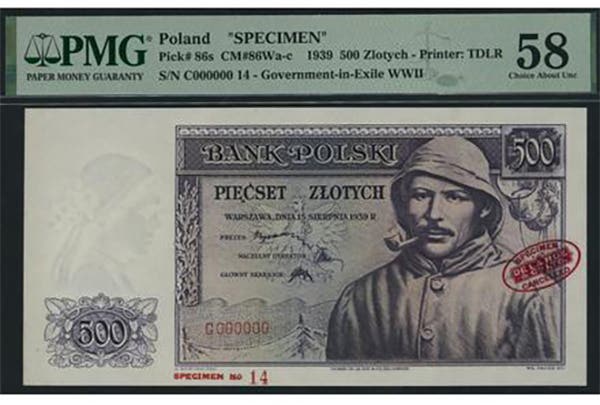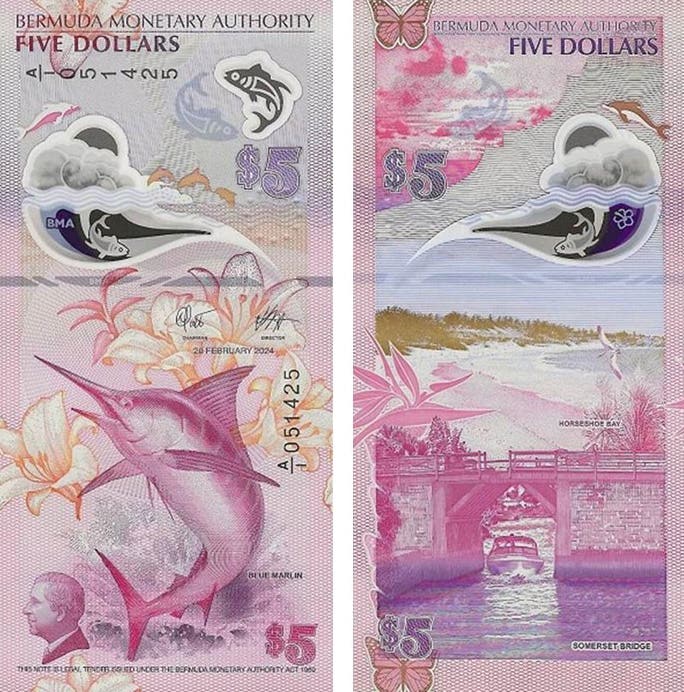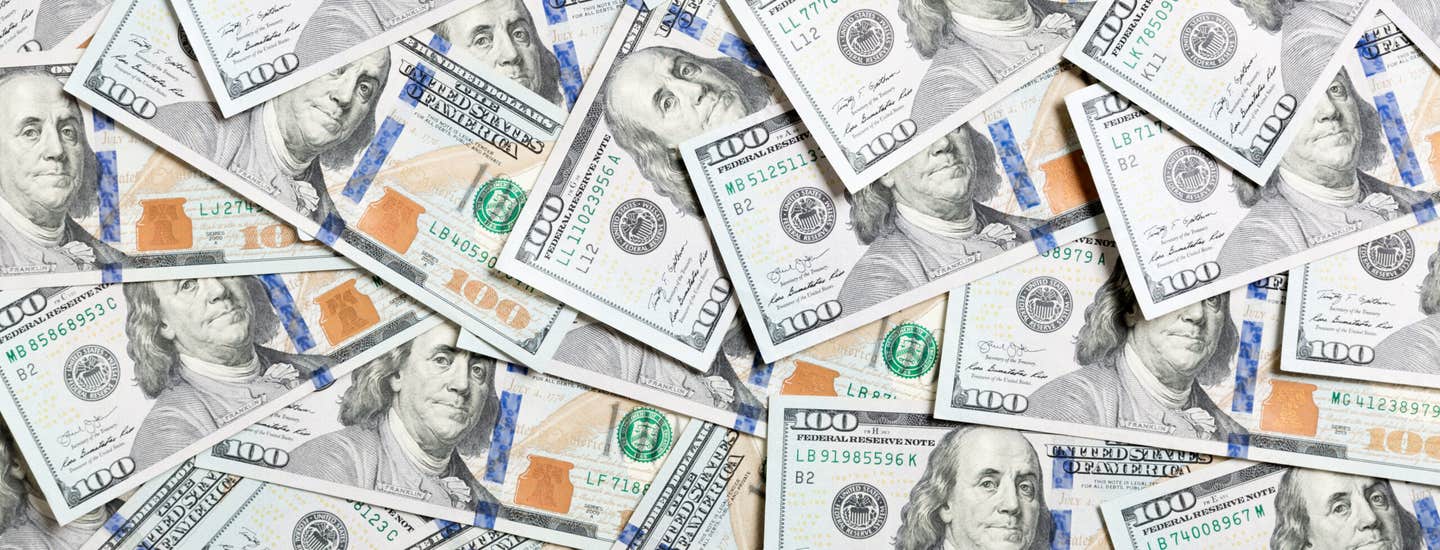Andes, N.Y., Time Capsule and Serendipity
The curious tale of the fortuitous intersection between two collectors.
This is a curious tale of the fortuitous intersection between two collectors, an unusual way one carved out a region from which to collect nationals, and extraordinary good luck.
Tom Conklin is the central figure in this tale. He ranks among the earliest of my currency trading buddies, helpful colleague on our team to sort the national bank note proofs at the National Numismatic Collection and to resolve unclassified date-back/post-date-back national bank note changeover serial number ranges in the Van Belkum data at the National Archives, and probably the leading food coupon collector/author in the country.
The origin stories for how we began collecting currency are uncannily similar. I’ll open this piece by letting Tom tell the story of his formative years.
“In high school I realized the backs of the earlier 1935 series silver certificates were made at a different height than those that came later so I started collecting them by series letter. Even by the late 1950s, I had never seen a Series of 1934 $1 and only a very few from the 1928 series. In 1961, when I got to college in Ohio, I opened a checking account in the local bank and enjoyed withdrawing red seal $2s to spend. In time I found all the $2 1928 and 1953 series notes except a 1928B, and even some early replacement notes.
“Obviously, I was finding paper money fascinating! When the $1 FRNs appeared in 1963, I was hooked. I started collecting them by serial number block. By 1965 I was corresponding and trading with Peter Huntoon. In 1967, my wife Eleanor and I headed west during our 9-day Easter break from teaching to among other things visit Huntoon in Tucson.
“He encouraged me to look seriously at nationals. Up until then, I had only seen one that a bank teller showed me. I was interested, although I didn’t know a good way to jump into that game. My fifth edition of the Friedberg Catalog listed only charter numbers, towns and bank names.
“After Peter introduced me to Louis Van Belkum’s work and I learned a bit about the scope of what was available, I was ready to proceed. I bought my first national from William P. Donlon in the spring of 1968 at the New York Metropolitan Show. I paid $28 for a mid-grade $20 Series of 1929 Type 2 note from the small town of Milford, Otsego County, N.Y., charter 5210, bearing serial A000069.
“It was from a town my wife Eleanor had lived in for 3 years growing up, so I hoped I would win her over to the radical thought of spending that much over face for a piece of currency. She approved! I took her acquiescence as license to purchase nationals, especially from New York where we were born and New Jersey where we were living.
“I got to know N.Y. dealer Allen Mincho and N.J. collector Bob Hearn in 1974 at local coin shows and auctions, both of whom served as mentors. New Jersey nationals were in demand and getting pricey, so in 1976 I let Bob Hearn talk me out of collecting N.J.
“Instead, I carved out a manageable area surrounding Otego, N.Y., where Eleanor was raised. Specifically, my domain was an area in and adjacent to the western Catskill Mountains centered on Otsego, Sullivan and Delaware counties along with some towns in contiguous counties. This region appealed to us because we drove through it coming and going to visit her parents.
“I traded or sold all my N.J. nationals to Bob Hearn. In return, he passed on the best nationals he found from my area. Bob and Allen helped me collect at a pace I could handle from my new 50-town, 62-bank collecting domain.
“It took me many years to drive to all 50+ towns that had any type of bank in that area where I photographed all the surviving bank buildings and spoke to the bank employees and local historians. I avidly pursued postcards that illustrated the banks at any show where they were sold. This morphed into acquiring anything bank related in my area such as old checks, bank letterheads and deposit-booster giveaway banks—the little banks given to customers to encourage them to save coins and bills.
“I arrived at the quaint town of Andes in the summer of 1982 where I took some photos of the old Ballantine bank building along Main Street. It was essentially abandoned and deteriorating. I also located and photographed the then empty cement-block bank that succeeded it closer to the center of town. The latter was torn down in 2000.”
The Ballantine building hosted The First National Bank of Andes, which was a real prize because it was among the earliest banks chartered in the nation, having been organized under the original National Bank Act of Feb. 25, 1863. It was organized by a man named Duncan Ballantine, a Scotsman who migrated to Andes in 1840 to build and operate a general store. That enterprise brought him wealth. The store faced Main Street on the edge of his large estate on the east side of town.
He started a small state-chartered banking business in a corner of his store in 1863. It prospered because there was no other bank in town so, in short order, he had a small but elegant wooden bank constructed next door with a lobby sporting a 16-foot-high ceiling. Simultaneously he applied for a national charter, which was approved March 3, 1864, with prestigious title The First National Bank of Andes and given charter number 302.
Ballantine took on a cashier named James F. Scott who served in that capacity for the entire life of the national bank. From its inception the bank maintained a circulation that grew to $54,000 within a year, not small by any means for a town the size of Andes.
Ballantine died in 1896, so his son David assumed the presidency. David quickly liquidated the national bank on July 28, 1896, to become David Ballantine, Banker, a private bank unburdened by the constraints of national banking law. Cashier Scott moved on to open his own bank in town, but it lasted only three years.
David Ballantine, highly regarded, operated his private bank out of the former First National building until his death in 1918. His was a one-man operation without cashier. No one in his family wanted to continue in banking so the operation was sold to local interests who organized The National Bank of Andes, charter 11243, in September 1918. The new bank operated out of a temporary building until its owners moved the operation to a newly built cement block building closer to the center of town.
The old Ballantine bank building, which resides at 221 Main Street, was vacated in 1918. This is where things get very interesting because the building was simply left to the elements. Inside were 54 years of Ballantine banking records.
All of the papers were stored on large shelves neatly organized in chronological order by type. Among them of all things was a copy of the 1863 National Bank Act. There also was a set of annual reports of the Comptroller of the Currency dating from 1868 through the late 1880s and all the correspondence between the Ballantine’s and the Comptroller of the Currency and other bankers.
There was one known incursion a year after the building was closed. A parade was organized in 1919 to celebrate the 100th anniversary of the founding of Andes. One float was made using the lumber from the shelving in the bank’s attic upon which was mounted the familiar but ancient cashier’s cage. The contents of the shelving were simply dumped on the floor of the attic and walked over as the shelving was removed. Neither the teller’s cage nor shelving were returned after the parade because it was easier to take the stuff to the dump. The building remained locked for the next seven decades.
That time was not good for some of the material strewn about the floor of the attic thanks to minor roof leaks and broken windows. Fortunately, damage from vermin was minimal. Thusly, all the papers and books remained and most of it stayed dry.
A local real estate man, Ron Guichard, purchased the building in the late 1980s. He had admired the building since his youth and possessed career expertise gained down-state in architectural restoration. He painstakingly brought the building back to its former glory complete with restored vault, then and used the building as his office.
Conklin learned of it from local newspaper articles shared by his in-laws and drove to town for a look in 1989. Ron gave him a tour that culminated in the attic, which had remained virtually untouched despite the renovation. Conklin couldn’t believe his eyes upon seeing the Comptroller reports and paperwork strewn about. Guichard indicated the material was available.
Conklin told me of the trove so the next time I was in the east with a car, which was during the early 1990s, I arranged in advance with him to visit Guichard to determine if we could buy some of the bank paper. I acquired all the Comptroller of the Currency reports as well as a ragged five-pound bank directory while Conklin rooted through the heaps of paperwork, some of which was damaged beyond salvation. He ultimately, salvaged two boxes of paper that represented a cross section of what was there. All three of us rejoiced that Guichard had not bothered to clean out the attic during the renovation.
The material Conklin recovered ranged in age from the origin of the bank in 1864 through the turn of the 20th century. Much of it is the type of paperwork that doesn’t get saved, not by the Federal Agencies or the bankers. The Ballantine’s were careful savers so routine correspondence with beautiful historic letterheads from all over, local mortgages, as well as Treasury documents were there.
Conklin had a particular eye for anything related to currency and Federal bonds, Treasury circulars, letters to the bank from correspondent banks, etc. He found shipping manifests for replacement sheets complete with serial numbers sent to the bank as replacements for worn notes redeemed by the U.S. Treasurer’s National Bank Redemption Agency, as well as manifests for still-fit currency being returned to the bank from that agency.
The paperwork has research value, particularly because the whole that Conklin collected remains intact. It is being archived and passed down through the channels of the Society of Paper Money Collectors to those who will make the most use of it. The same will be the fate of the annual reports of the Comptroller of the Currency.








